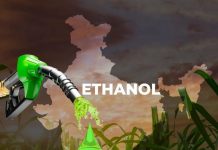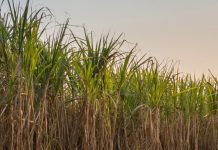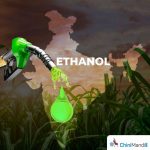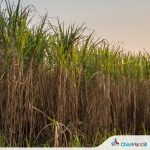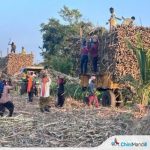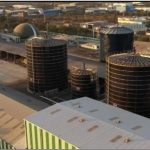Automation coupled with artificial intelligence (AI) has become a transformative force in various industries, including agriculture. AI-driven automation increases efficiency, accuracy, and productivity by reducing human intervention and optimizing resource utilization. In the context of sugarcane farming, AI-driven automation can revolutionise the entire lifecycle of the crop, from planting to harvesting, ensuring higher yields, lower costs, and sustainable agricultural practices.
The following analysis provides an in-depth look at the integration of AI in sugarcane farming automation, exploring its practical implementation, its benefits, and potential challenges. Using advanced AI technologies such as machine learning, computer vision, and robotics, farmers can make data-driven decisions that improve crop health, enable efficient resource management, yield enhancement, and mechanized harvesting, thereby helping to modernize traditional farming practices.
In the current 2024-25 crushing season, due to the lack of sugarcane availability, the factories in Maharashtra remained operational for only three months. Due to this, the financial difficulties of the sugar factories have become more difficult due to the increase in production costs. Sugarcane farmers have also been financially affected due to the increase in production costs due to the decrease in sugarcane production per hectare. The country’s ethanol blending program has also been affected.
There are 12 lakh hectares of land under sugarcane in the state, out of which only 900 lakh tonnes of sugarcane was available in this crushing season. This means that the average yield per hectare was 72 tonnes. We have farmers who produce 70 to 80 tonnes of sugarcane per acre. The crushing capacity of the factories in the state has reached 12 lakh MT per day. In general, to achieve profitability, the factories should remain open for at least 150 days. That is, for a crushing capacity of 12 lakh tonnes, it is necessary to grow about 1450 to 1500 lakh MT of sugarcane. For this, it is necessary to increase the productivity of the land to 150 MT per hectare. For this, it is necessary to use artificial intelligence in sugarcane production.
What is artificial intelligence (AI)?
Artificial intelligence (AI) is a branch of computer science that enables machines to mimic human cognitive functions such as learning, reasoning, problem solving, and decision making. AI systems analyze large amounts of data, recognize patterns, and make predictions or autonomous decisions with minimal human intervention.
AI can be broadly classified into:
1) Machine Learning (ML): Algorithms that learn from data to make accurate predictions or decisions.
2) Deep learning: A subset of ML that uses neural networks to process complex data.
3) Computer Vision: The ability of AI to interpret and analyze visual information in the environment.
4) Natural Language Processing (NLP): Enabling machines to understand and communicate with human language.
5) Robotics: AI-powered machines that perform physical tasks efficiently and autonomously.
In sugarcane farming, AI-driven automation optimizes processes such as crop monitoring, pest control, irrigation, and harvesting, leading to sustainable and precision-based agriculture.
Introducing AI-powered automation in agriculture
AI-driven automation in agriculture is the use of artificial intelligence (AI), machine learning, robotics, and data analytics to increase and optimize agricultural production. This technology is capable of precision farming, improving crop yields, reducing resource wastage, and increasing efficiency.
By integrating AI-powered tools like autonomous tractors, drones, smart irrigation systems, and predictive analytics, farmers can make data-driven decisions to monitor soil health, detect diseases, and optimize planting schedules. AI-powered automation not only increases productivity but also supports sustainable farming practices by reducing pesticide, fertilizer, and water use. This transformation is shaping modern agriculture, making it more efficient, cost-effective, and environmentally friendly.
1. Overview of AI in Agriculture:
Over the past decade, artificial intelligence has been increasingly integrated into agricultural practices to address challenges such as resource management, crop health monitoring, and yield prediction. Techniques ranging from machine learning and computer vision to robotics and data analytics have enabled the shift to precision farming, where decisions are informed by detailed, real-time data.
2. AI applications in sugarcane farming
A. Crop monitoring and disease detection
Remote sensing and computer vision: Drones and satellite imagery and deep learning algorithms are used to monitor large sugarcane fields. These systems can detect signs of pest infestation, disease outbreaks or nutrient deficiencies at an early stage. Studies have shown that computer vision techniques can help in the accurate detection of diseases such as red rot or smut, allowing farmers to target and eradicate them precisely.
Image-based diagnosis: Machine learning models trained on thousands of images can detect changes in healthy and diseased plants. This diagnostic capability has been crucial for timely treatment, reducing the spread of pathogens, and improving overall crop health.
b. Yield forecasting and crop management
Predictive Analysis: AI-powered models analyze historical data (weather, soil conditions, irrigation schedules) to predict production. For sugarcane, where yield variability is high due to environmental factors, such models help plan harvest and supply chain logistics.
Data-driven decision making: Integrating AI with IoT sensors across the field enables continuous monitoring of soil moisture, temperature, and nutrients. This data feeds into predictive models, optimizing decisions related to fertilizer application and irrigation scheduling, and ultimately increasing land productivity and increasing yields.
c. Irrigation and resource optimization
Smart irrigation system: AI systems help in using water efficiently by analyzing real-time sensor data and weather forecasts. In sugarcane farming, where water demand is high, such systems ensure efficient use of water, reduce waste and improve the sustainability of operations.
Precision farming techniques: By combining geospatial data with AI, farmers can use water, fertilizers, and pesticides according to changing conditions in a specific area, reducing costs and environmental impacts.
D. Mechanization and harvesting
Robotics and Automated Harvesting: Emerging research in robotics is beginning to impact sugarcane harvesting. Automated systems can reduce labor costs and improve harvesting efficiency, and although this technology is still in its early stages of implementation in many regions, it is now in high demand due to the shortage of sugarcane harvesters.
3. Impact on sugarcane farming
A. Increased land efficiency and yield increase
Optimized input: AI-powered precision farming methods help farmers use water, fertilizers, and pesticides more efficiently. This targeted approach not only reduces costs but also reduces environmental impacts.
Yield Forecast Accuracy: Improved forecasts help farmers plan better, from determining the optimal time for harvesting to managing storage and logistics, thereby increasing overall productivity.
B. Disease management and sustainability
Early intervention: Rapid identification of disease and pest outbreaks allows for faster action, reduces crop losses, and ensures more sustainable farming practices.
Sustainable practices: With AI tools that support data-driven decisions, sugarcane farming can adopt more sustainable practices by reducing excessive use of chemicals and better managing water resources.
C. Economic and functional benefits
Cost reduction: Reduced input costs and labor requirements, as well as improved crop yields, create a better economic future for sugarcane growers.
Supply Chain Optimization: Accurate yield forecasting and automated field monitoring also contribute to more efficient supply chain and market operations.
The integration of artificial intelligence in sugarcane farming is transforming traditional practices with early steps towards increased crop monitoring, predictive analytics, smart irrigation and mechanized harvesting. While the obvious benefits include increased yields, efficient resource use and better disease management, its widespread adoption will depend on overcoming data challenges and ensuring that the technology is accessible to all farmers. Continued collaboration between researchers, agronomists, sugar mills and technology developers will be key to realizing the full potential of artificial intelligence in sugarcane farming.
Primary goals of AI integration
1) Increasing production:
Precision Crop Management: AI systems enable accurate monitoring of crop health, allowing farmers to identify problems like nutrient deficiencies or pest infestations early. This facilitates targeted interventions, which helps maintain optimal plant health and maximize yields.
Accurate Income Estimates: Machine learning models analyze historical and real-time data, including weather, soil conditions, and crop growth patterns, to accurately predict yields. These predictive insights help optimize planting schedules and harvest times, ultimately increasing overall yields.
2) Reducing labor dependency
Automation of routine tasks: Technologies like computer vision, robotics, and automated irrigation systems are reducing the need for manual labor. Tasks like disease detection, irrigation scheduling, and even primary harvesting can be managed by AI-powered systems, reducing labor costs and reliance on human intervention.
Remote Monitoring: Drones and IoT sensors enable remote monitoring and management of farms. This means that farmers can monitor large areas without the need for constant staff, reducing the demand for labor.
3) Increasing operational efficiency
Optimized Resource Management: AI-powered analytics help in the precise use of water, fertilizers and pesticides. By meeting the specific needs of different field segments, these technologies reduce waste, reduce input costs and reduce environmental impact.
Data-driven decision making: Continuous collection and analysis of data from various sources (e.g. soil sensors, weather forecasts) enables real-time decision making. This integration ensures that every aspect of farming – from planting to post-harvest operations – is optimized for efficiency.
Streamlined supply chain management: Accurate yield forecasts and automated field monitoring contribute to more effective planning in logistics and storage, further increasing the efficiency of the overall production process. Focusing on these goals, AI applications in sugarcane farming aim to create more sustainable, cost-effective, and productive agricultural systems. These goals not only address the immediate challenges of production and labor, but also lay the foundation for a more resilient agricultural ecosystem in the long term.
AI technology used:
1. Machine Learning and Predictive Analytics
Machine Learning: Machine learning (ML) refers to algorithms that learn patterns from historical and real-time data to make predictions or decisions without having to be explicitly programmed for each task.
Uses in sugarcane farming:
Income forecast: ML models analyze weather patterns, soil conditions, and historical crop data to accurately predict sugarcane production. This allows for better planning of harvest and market supply.
Detecting diseases and pests: By training on images of healthy and diseased plants, ML algorithms can quickly identify symptoms of infections such as red rot or smut, allowing for timely intervention.
Nutrient Management: Algorithms process data from various sources to determine optimal fertilizer use, ensuring that crops receive the right amount of nutrients for maximum growth and minimal waste.
2. Internet of Things (IoT)
IoT involves the interconnection of devices (sensors, cameras, drones) that collect and exchange data over the internet, providing real-time insights into field conditions.
Uses in sugarcane farming:
Soil and Environmental Monitoring: Sensors distributed throughout the field measure moisture levels, temperature, and nutrients, providing continuous data that supports decision-making.
Smart irrigation system: IoT devices integrate with AI to adjust water distribution based on current weather conditions and soil moisture, ensuring water is used efficiently and crops are not over- or under-watered.
Information collection: Continuous monitoring by IoT networks creates large datasets that feed into machine learning models, increasing their predictive power and accuracy.
3. Robotics and Automation
Robotics in agriculture involves automated machines and systems designed to perform tasks that would otherwise require significant physical labor.
Uses in sugarcane farming:
Automatic harvesting: Robotic systems are being developed to handle the physical aspects of sugarcane harvesting, which can reduce labor costs and improve efficiency, especially in large-scale operations.
Farm maintenance: Autonomous vehicles can perform routine tasks such as weeding, soil sampling, and even targeted pesticide application, ensuring consistent crop care.
Precision farming: Robots equipped with sensors and cameras can navigate the field to collect data and perform real-time analysis, further supporting decisions made by AI systems.
4. Remote sensing and computer vision
Remote sensing uses data collected from satellites or drones, while computer vision enables the processing and interpretation of these images using AI.
Uses in sugarcane farming:
Crop Health Monitoring: High-resolution images taken by drones are analyzed using computer vision techniques to detect problems such as pest infestations, nutrient deficiencies, or water stress.
Field Mapping: Remote sensing provides detailed maps of fields, which can be used for planning irrigation routes, fertilizer application, and other precision farming activities.
Growth Analysis: Time-series analysis of remote sensing data helps to monitor crop development and predict optimal harvest times.
Integrated effect
These technologies often work in synergy. For example, IoT sensors collect data that is fed into machine learning models, while robotics can act on the insights provided by these models. In sugarcane farming, this integrated approach can lead to:
Improved crop management: Real-time insights allow for immediate corrective measures.
Resource Optimization: Proper use of water, fertilizers, and pesticides reduces waste.
Reduced labor dependency: Automation of repetitive tasks reduces the human need for more strategic roles.
Increased income and sustainability: Improved disease management and resource utilization, resulting in increased overall productivity and environmental sustainability.
Together, machine learning, IoT, robotics, and computer vision are transforming sugarcane farming by increasing efficiency, reducing labor requirements, and increasing yields. This multi-technology integration is critical to addressing the economic and environmental challenges facing modern agriculture.
Automation process from sugarcane cultivation to harvesting: Automation in sugarcane farming uses advanced machinery, sensors, and data analytics to increase efficiency, reduce labor dependency, and improve production. A step-by-step explanation of the automated process is given below:
1. Land preparation
Automatic tools: GPS-guided tractor, laser land leveler
Procedure: The land is leveled using a laser leveler to ensure even distribution of water.
Deep plowing and harrowing are done using autonomous tractors to break up the soil.
Smart irrigation systems monitor soil moisture for optimal water supply.
2. Seed selection and planting
Automatic tools: Mechanized planting machines, AI-based crop selection tools
Procedure: High-yielding sugarcane varieties are selected using AI and data analytics.
Mechanized sugarcane planters maintain precise row spacing and depth, which improves germination. Drones with AI algorithms monitor soil fertility and guide cultivation.
3. Irrigation and fertilization
Automatic tools: Drip irrigation, remote-controlled sprinkler systems, soil sensors
Procedure: Drip irrigation methods deliver water directly to plant roots, reducing water waste. Fertilizer applicators distribute nutrients based on soil data collected by sensors.
IoT-based monitoring systems track soil health and adjust irrigation accordingly.
4. Crop monitoring and pest control
Automated tools: drones, AI-powered pest detection, robotic sprayers
Procedure: Drones scan fields and use AI to detect pests and diseases.
Automated pesticide sprayers target infested areas with precision.
IoT sensors provide real-time data about temperature, humidity, and plant health.
5. Harvest
Automatic tools: Mechanical harvesters, autonomous transport vehicles
Procedure: Sugarcane harvesters cut the sugarcane stalks, clean them, and load them onto transport vehicles. AI-driven logistics optimizes transportation routes to the sugar factory.
Robotic arms separate waste from usable sugarcane, increasing efficiency.
Automation process flow chart
Case Studies from Kolhapur District: Several case studies have been conducted on sugarcane cultivation and related industries in Kolhapur district, focusing on various aspects such as management practices, environmental impacts and socio-economic issues. Here are some notable examples:
1) Management practices to prevent flood damage: A study was conducted to examine the adoption of management practices by sugarcane growers in Karveer and Shirol tehsils to reduce flood-related losses. The research revealed that 60% of farmers adopted such practices to a moderate extent, while 27.86% of farmers adopted them to a low extent and 12.14% of farmers showed a high adoption rate.
2) Environmental Audit of Kumbhi Kasari Sugar Factory: An environmental audit was conducted at Kumbhi Kasari Sugar Factory in Kuditre, Kolhapur. The audit assessed the factory’s environmental management practices, highlighting the water consumption and wastewater discharge associated with sugar production. Recommendations were made to improve environmental performance and reduce pollution.
3) Evaluation of sugarcane purchase prices: A case study focused on the Shree Chhatrapati Shahu Sahakari Sakhar Karkhana Limited in Kagal assessed the adequacy of sugarcane procurement rates paid to farmers over a period of 11 years. The study analyzed data on sugarcane prices, production costs, and initiatives undertaken by the factory to support farmers.
Implementation of sugarcane crop: Artificial Intelligence (AI) has been effectively incorporated into sugarcane farming in Baramati, Maharashtra, through pilot projects focusing on smart monitoring and AI-assisted harvesting. These initiatives have led to significant improvements in crop production, resource efficiency, and overall farm productivity.
AI-powered smart monitoring: In collaboration with Microsoft and the University of Oxford, Krishi Vikas Trust (ADT) Baramati has implemented an AI-based satellite crop monitoring platform. The platform uses satellite imagery and AI algorithms to provide real-time insights into crop health, soil conditions and environmental factors. Farmers receive timely advice on irrigation, fertilizers and pest control, enabling precise resource management. For example, the system can detect plant stress through satellite maps, enabling targeted interventions that save water and reduce fertilizer use.
AI-assisted harvesting: The AI system predicts the optimal harvest time by analyzing factors such as soil health, weather patterns and crop growth stages. This ensures that sugarcane is harvested at maximum sucrose levels, which increases sugar content and profits. Farmers receive alerts via a mobile application, which guides them to harvest within the ideal 20 days when sugar content is at its highest.
Results of the pilot project:
Income Improvement: Sugarcane production of the 86032 variety has increased from 70 tons per acre to 120 tons, while other varieties have improved by more than 40%.
Cost reduction: Better use of fertilizers and pesticides reduced average input costs by 41%.
Resource Efficiency: Accurate irrigation scheduling reduced water use by about 30%.
Functionality: Remote monitoring capabilities allowed farmers to effectively monitor their crops from a distance, reducing farm visits by 75%.
These results highlight the transformative potential of AI in increasing productivity and sustainability in agriculture, particularly in sugarcane farming.
Challenges and solutions in the use of AI: AI has the potential to transform industries, but there are many challenges in its implementation. The key challenges, along with potential solutions, are listed below:
1. High initial investment
Challenge: Developing and deploying AI solutions requires significant financial investment in infrastructure, software, and skilled personnel. Small and medium-sized enterprises (SMEs) may struggle to afford AI implementation.
Solution:
Cloud-based AI services: Companies can access AI tools using cloud platforms (e.g. AWS, Google Cloud, Azure), which reduces upfront costs.
Government and private grants: Many governments and organizations provide funding and incentives to help adopt AI, especially for startups and SMEs.
Open-source AI tools: Using open-source AI frameworks such as TensorFlow, PyTorch, and Scikit-Learn can reduce software costs.
2. Technical skill requirement
Challenge: AI development requires specialized skills in machine learning, data science, and software engineering, which are in high demand but in short supply. Many businesses lack internal AI expertise, making implementation difficult.
Solution:
AI-as-a-Service (AIAAS): Companies can use pre-built AI models from cloud providers instead of building solutions from scratch.
Training and skill development for employees: Organizations can invest in AI training programs to upskill their employees. Online platforms like Coursera, Udemy, and edX offer AI and machine learning courses.
Collaboration and Partnership: Businesses can partner with AI startups, universities, or research institutes to gain technical expertise.
3. Data privacy and security concerns
Challenge: AI systems require large datasets, which raises concerns about user privacy, data breaches, and regulatory compliance (e.g. GDPR, CCPA). Unauthorized data access and AI-driven cyber threats pose a security threat.
Solution:
Data encryption and anonymization: Encrypting and anonymizing sensitive data can help protect privacy.
Compliance with the rules: Organizations should ensure that AI applications are compliant with legal frameworks such as GDPR, HIPAA, and CCPA.
Organized Learning: This approach allows AI models to learn from decentralized data without having to transfer it to a central server, which improves security and privacy.
Despite challenges such as high costs, gaps in expertise, and data privacy concerns, strategic solutions such as cloud AI, training programs, and secure data practices can enable effective AI adoption. Organizations that proactively address these challenges can maximize the benefits of AI while minimizing risk.
Conclusion and future scope of AI-driven automation in agriculture:
AI-driven automation is transforming agriculture by increasing efficiency, accuracy, and sustainability. Our findings highlight that AI applications – such as predictive analytics, autonomous machinery, smart irrigation, and crop health monitoring – are significantly improving yields, reducing resource waste, and reducing human labor. The integration of AI with IoT, drones, and robotics is also enabling data-driven decision-making and optimizing farming practices.
Looking ahead, the future of AI in agriculture holds enormous potential. Advances in machine learning, computer vision, and robotics will further refine automation, making agriculture more adaptable and resilient to climate change. The adoption of AI-powered agri-advisory services and blockchain-based traceability will ensure food safety and transparency. However, challenges such as high implementation costs, data privacy concerns, and the need for skilled labor will remain.
With continued research, policy support, and farmer education, AI-driven automation will play a critical role in shaping the future of sustainable and smart agriculture.
Recently, Visma, Pune, in collaboration with the Chairman of Agricultural Development Trust (ADT), Baramati and Sakal Group, Hon. Pratapara Pawar, organized a state level meeting on this subject at Baramati. In which 450 representatives of Sugar Association, Mumbai, Vasantdada Sugar Institute, Manjari and most of the sugar factories of the state were present. At this time, there was a lively discussion on increasing the sugarcane production of the state by using natural intelligence in sugarcane crop, and it is believed that the use of this technology will continue on a large scale.
which helps to increase overall productivity.
B. Disease management and sustainability
Early intervention: Rapid identification of disease and pest outbreaks allows for faster action, reduces crop losses, and ensures more sustainable farming practices.
Sustainable practices: With AI tools that support data-driven decisions, sugarcane farming can adopt more sustainable practices by reducing excessive use of chemicals and better managing water resources.
C. Economic and functional benefits
Cost reduction: Reduced input costs and labor requirements, as well as improved crop yields, create a better economic future for sugarcane growers.
Supply Chain Optimization: Accurate yield forecasting and automated field monitoring also contribute to more efficient supply chain and market operations.
Primary goals of AI integration-
Product improvement
Precision Crop Management: AI systems enable accurate monitoring of crop health, allowing farmers to identify problems like nutrient deficiencies or pest infestations early. This facilitates targeted interventions, which helps maintain optimal plant health and maximize yields.
Accurate Income Estimates: Machine learning models analyze historical and real-time data, including weather, soil conditions, and crop growth patterns, to accurately predict yields. These predictive insights help optimize planting schedules and harvest times, ultimately increasing overall yields.
Reducing labor dependency
Automation of routine tasks: Technologies like computer vision, robotics, and automated irrigation systems are reducing the need for manual labor. Tasks like disease detection, irrigation scheduling, and even primary harvesting can be managed by AI-powered systems, reducing labor costs and reliance on human intervention.
Remote Monitoring: Drones and IoT sensors enable remote monitoring and management of farms. This means that farmers can monitor large areas without the need for constant staff, reducing the demand for labor.
Increasing operational efficiency
Optimized Resource Management: AI-powered analytics help in the precise use of water, fertilizers and pesticides. By meeting the specific needs of different field segments, these technologies reduce waste, reduce input costs and reduce environmental impact.
Data-driven decision making: Continuous collection and analysis of data from various sources (e.g. soil sensors, weather forecasts) enables real-time decision making. This integration ensures that every aspect of farming – from planting to post-harvest operations – is optimized for efficiency.
Streamlined supply chain management: Accurate yield forecasts and automated field monitoring contribute to more effective planning in logistics and storage, further increasing the efficiency of the overall production process. Focusing on these goals, AI applications in sugarcane farming aim to create more sustainable, cost-effective, and productive agricultural systems. These goals not only address the immediate challenges of production and labor, but also lay the foundation for a more resilient agricultural ecosystem in the long term.
AI technology used:
1. Machine Learning and Predictive Analytics
Machine learning –
Overview: Machine learning (ML) refers to algorithms that learn patterns from historical and real-time data to make predictions or decisions without having to be explicitly programmed for each task.
Uses in sugarcane farming:
Income forecast: ML models analyze weather patterns, soil conditions, and historical crop data to accurately predict sugarcane production. This allows for better planning of harvest and market supply.
Detecting diseases and pests: By training on images of healthy and diseased plants, ML algorithms can quickly identify symptoms of infections such as red rot or smut, allowing for timely intervention.
Nutrient Management: Algorithms process data from various sources to determine optimal fertilizer use, ensuring that crops receive the right amount of nutrients for maximum growth and minimal waste.
2. Internet of Things (IoT)
Overview: IoT involves the interconnection of devices (sensors, cameras, drones) that collect and exchange data over the internet, providing real-time insights into field conditions.
Uses in sugarcane farming:
Soil and Environmental Monitoring: Sensors distributed throughout the field measure moisture levels, temperature, and nutrients, providing continuous data that supports decision-making.
Smart irrigation system: IoT devices integrate with AI to adjust water distribution based on current weather conditions and soil moisture, ensuring water is used efficiently and crops are not over- or under-watered.
Information collection: Continuous monitoring by IoT networks creates large datasets that feed into machine learning models, increasing their predictive power and accuracy.
3. Robotics and Automation
Overview: Robotics in agriculture involves automated machines and systems designed to perform tasks that would otherwise require significant physical labor.
Uses in sugarcane farming:
Automatic harvesting: Robotic systems are being developed to handle the physical aspects of sugarcane harvesting, which could reduce labor costs and improve efficiency, especially in large-scale operations.
Farm maintenance: Autonomous vehicles can perform routine tasks such as weeding, soil sampling, and even targeted pesticide application, ensuring consistent crop care.
Precision farming: Robots equipped with sensors and cameras can navigate the field to collect data and perform real-time analysis, further supporting decisions made by AI systems.
4. Remote sensing and computer vision
Overview: Remote sensing uses data collected from satellites or drones, while computer vision enables the processing and interpretation of these images using AI.
Uses in sugarcane farming:
Crop Health Monitoring: High-resolution images taken by drones are analyzed using computer vision techniques to detect problems such as pest infestations, nutrient deficiencies, or water stress.
Field Mapping: Remote sensing provides detailed maps of fields, which can be used for planning irrigation routes, fertilizer application, and other precision farming activities.
Growth Analysis: Time-series analysis of remote sensing data helps to monitor crop development and predict optimal harvest times.
Integrated effect
These technologies often work in synergy. For example, IoT sensors collect data that is fed into machine learning models, while robotics can act on the insights provided by these models. In sugarcane farming, this integrated approach can lead to:
Improved crop management: Real-time insights allow for immediate corrective measures.
Resource Optimization: Proper use of water, fertilizers, and pesticides reduces waste.
Reduced labor dependency: Automation of repetitive tasks frees up human resources for more strategic roles.
Increased income and sustainability: Improved disease management and resource utilization, resulting in increased overall productivity and environmental sustainability. Together, machine learning, IoT, robotics, and computer vision are transforming sugarcane farming by increasing efficiency, reducing labor requirements, and increasing yields. This multi-technology integration is critical to addressing the economic and environmental challenges facing modern agriculture.
Automation process from sugarcane cultivation to harvesting:
Automation in sugarcane farming uses advanced machinery, sensors, and data analytics to increase efficiency, reduce labor dependency, and improve production. A step-by-step explanation of the automated process is given below:
1. Land preparation
Automatic tools: GPS-guided tractor, laser land leveler
Procedure: The land is leveled using a laser leveler to ensure even distribution of water.
Deep plowing and harrowing are done using autonomous tractors to break up the soil.
Smart irrigation systems monitor soil moisture for optimal water supply.
2. Seed selection and planting
Automatic tools: Mechanized planting machines, AI-based crop selection tools
Procedure: High-yielding sugarcane varieties are selected using AI and data analytics.
Mechanized sugarcane planters maintain precise row spacing and depth, which improves germination. Drones with AI algorithms monitor soil fertility and guide cultivation.
3. Irrigation and fertilization
Automatic tools: Drip irrigation, remote-controlled sprinkler systems, soil sensors
Procedure: Drip irrigation methods deliver water directly to plant roots, reducing water waste. Fertilizer applicators distribute nutrients based on soil data collected by sensors.
IoT-based monitoring systems track soil health and adjust irrigation accordingly.
4. Crop monitoring and pest control
Automated tools: drones, AI-powered pest detection, robotic sprayers
Procedure: Drones scan fields and use AI to detect pests and diseases.
Automated pesticide sprayers target infested areas with precision.
IoT sensors provide real-time data about temperature, humidity, and plant health.
5. Harvest
Automatic tools: Mechanical harvesters, autonomous transport vehicles
Procedure: Sugarcane harvesters cut the sugarcane stalks, clean them, and load them onto transport vehicles. AI-driven logistics optimizes transportation routes to the sugar factory.
Robotic arms separate waste from usable sugarcane, increasing efficiency.
Tools
Procedure: High-yielding sugarcane varieties are selected using AI and data analytics.
Mechanized sugarcane planters maintain precise row spacing and depth, which improves germination. Drones with AI algorithms monitor soil fertility and guide cultivation.
6. Irrigation and fertilization
Automatic tools: Drip irrigation, remote-controlled sprinkler systems, soil sensors
Procedure: Drip irrigation methods deliver water directly to plant roots, reducing water waste. Fertilizer applicators distribute nutrients based on soil data collected by sensors.
IoT-based monitoring systems track soil health and adjust irrigation accordingly.
7. Crop monitoring and pest control
Automated tools: drones, AI-powered pest detection, robotic sprayers
Procedure: Drones scan fields and use AI to detect pests and diseases.
Automated pesticide sprayers target infested areas with precision.
IoT sensors provide real-time data about temperature, humidity, and plant health.
8.Harvest
Automatic tools: Mechanical harvesters, autonomous transport vehicles
Procedure: Sugarcane harvesters cut the sugarcane stalks, clean them, and load them onto transport vehicles. AI-driven logistics optimizes transportation routes to the sugar factory.
Robotic arms separate waste from usable sugarcane, increasing efficiency.
Case Studies from Kolhapur District:
Several case studies have been conducted on sugarcane cultivation and related industries in Kolhapur district, focusing on various aspects such as management practices, environmental impacts and socio-economic issues. Here are some notable examples:
1) Management practices to prevent flood damage: A study was conducted to examine the adoption of management practices by sugarcane growers in Karveer and Shirol tehsils to reduce flood-related losses. The research revealed that 60% of farmers adopted such practices to a moderate extent, while 27.86% of farmers adopted them to a low extent and 12.14% of farmers showed a high adoption rate.
2) Environmental Audit of Kumbhi Kasari Sugar Factory: An environmental audit was conducted at Kumbhi Kasari Sugar Factory at Kuditre, Kolhapur. The audit assessed the environmental management practices of the factory, highlighting the water consumption and wastewater discharge associated with sugar production. Recommendations were made to improve environmental performance and reduce pollution.
3) Evaluation of Sugarcane Purchase Rates: A case study focusing on Shree Chhatrapati Shahu Sahakari Sugar Factory Limited, Kagal, assessed the adequacy of sugarcane purchase rates paid to farmers over a period of 11 years. The study analyzed data on sugarcane prices, production costs and initiatives undertaken by the factory to support farmers.
AI-powered smart monitoring: In collaboration with Microsoft and the University of Oxford, Krishi Vikas Trust (ADT) Baramati has implemented an AI-based satellite crop monitoring platform. The platform uses satellite imagery and AI algorithms to provide real-time insights into crop health, soil conditions and environmental factors. Farmers receive timely advice on irrigation, fertilizers and pest control, enabling precise resource management. For example, the system can detect plant stress through satellite maps, enabling targeted interventions that save water and reduce fertilizer use.
AI-assisted harvesting: The AI system predicts the optimal harvest time by analyzing factors such as soil health, weather patterns and crop growth stages. This ensures that sugarcane is harvested at maximum sucrose levels, which increases sugar content and profits. Farmers receive alerts via a mobile application, which guides them to harvest within the ideal 20 days when sugar content is at its highest.
Results of the pilot project:
Income Improvement: Sugarcane production of the 86032 variety has increased from 70 tons per acre to 120 tons, while other varieties have improved by more than 40%.
Cost reduction: Better use of fertilizers and pesticides reduced average input costs by 41%.
Resource Efficiency: Accurate irrigation scheduling reduced water use by about 30%.
Functionality: Remote monitoring capabilities allowed farmers to effectively monitor their crops from a distance, reducing farm visits by 75%.
These results highlight the transformative potential of AI in increasing productivity and sustainability in agriculture, particularly in sugarcane farming.
Challenges and solutions in the use of AI –
AI has the potential to transform industries, but there are many challenges in its implementation. The key challenges, along with potential solutions, are listed below:
1. High initial investment
Challenge: Developing and deploying AI solutions requires significant financial investment in infrastructure, software, and skilled personnel. Small and medium-sized enterprises (SMEs) may struggle to afford AI implementation.
Solution:
Cloud-based AI services: Companies can access AI tools using cloud platforms (e.g. AWS, Google Cloud, Azure), which reduces upfront costs.
Government and private grants: Many governments and organizations provide funding and incentives to help adopt AI, especially for startups and SMEs.
Open-source AI tools: Using open-source AI frameworks such as TensorFlow, PyTorch, and Scikit-Learn can reduce software costs.
2. Technical skill requirement
Challenge: AI development requires specialized skills in machine learning, data science, and software engineering, which are in high demand but in short supply. Many businesses lack internal AI expertise, making implementation difficult.
Solution:
AI-as-a-Service (AIAAS): Companies can use pre-built AI models from cloud providers instead of building solutions from scratch.
Training and skill development for employees: Organizations can invest in AI training programs to upskill their employees. Online platforms like Coursera, Udemy, and edX offer AI and machine learning courses.
Collaboration and Partnership: Businesses can partner with AI startups, universities, or research institutes to gain technical expertise.
3. Data privacy and security concerns
Challenge: AI systems require large datasets, which raises concerns about user privacy, data breaches, and regulatory compliance (e.g. GDPR, CCPA). Unauthorized data access and AI-driven cyber threats pose a security risk.
Solution :
Data encryption and anonymization: Encrypting and anonymizing sensitive data can help protect privacy.
Compliance with the rules: Organizations should ensure that AI applications are compliant with legal frameworks such as GDPR, HIPAA, and CCPA.
Organized Learning: This approach allows AI models to learn from decentralized data without having to transfer it to a central server, which improves security and privacy.
Despite challenges such as high costs, gaps in expertise, and data privacy concerns, strategic solutions such as cloud AI, training programs, and secure data practices can enable effective AI adoption. Organizations that proactively address these challenges can maximize the benefits of AI while minimizing risk.
Conclusion and future scope of AI-driven automation in agriculture
AI-driven automation is transforming agriculture by increasing efficiency, accuracy, and sustainability. Our findings highlight that AI applications – such as predictive analytics, autonomous machinery, smart irrigation, and crop health monitoring – are significantly improving yields, reducing resource waste, and reducing human labor. The integration of AI with IoT, drones, and robotics is also enabling data-driven decision-making and optimizing farming practices.
Looking ahead, the future of AI in agriculture holds enormous potential. Advances in machine learning, computer vision, and robotics will further refine automation, making agriculture more adaptable and resilient to climate change. The adoption of AI-powered agri-advisory services and blockchain-based traceability will ensure food safety and transparency. However, challenges such as high implementation costs, data privacy concerns, and the need for skilled labor will remain.
With continued research, policy support, and farmer education, AI-driven automation will play a significant role in shaping the future of sustainable and smart agriculture.
Interestingly, in March 2025, Microsoft, Oxford University and Krishi Vikas Trust Baramati, as well as the President of Sakal Group, Hon. Prataprao Pawar, organized a state-level gathering in Baramati, Pune and held a discussion session on how this artificial intelligence technology helps in increasing the productivity of sugarcane farming. This gathering was attended by 450 representatives of the Sugar Association, Mumbai, Vasantdada Sugar Institute, Manjari and all the sugar factories in the state. Therefore, it is believed that the actual use of this technology will be started and the sugarcane growers and sugar factories will benefit greatly and the ethanol blending program of the Central Government will get a good boost.
P.G. Medhe is the former Managing Director of Shri Chhatrapati Rajaram Sahakari Sakhar Karkhana Ltd and sugar industry analyst. He can be contacted at +91 9822329898.



